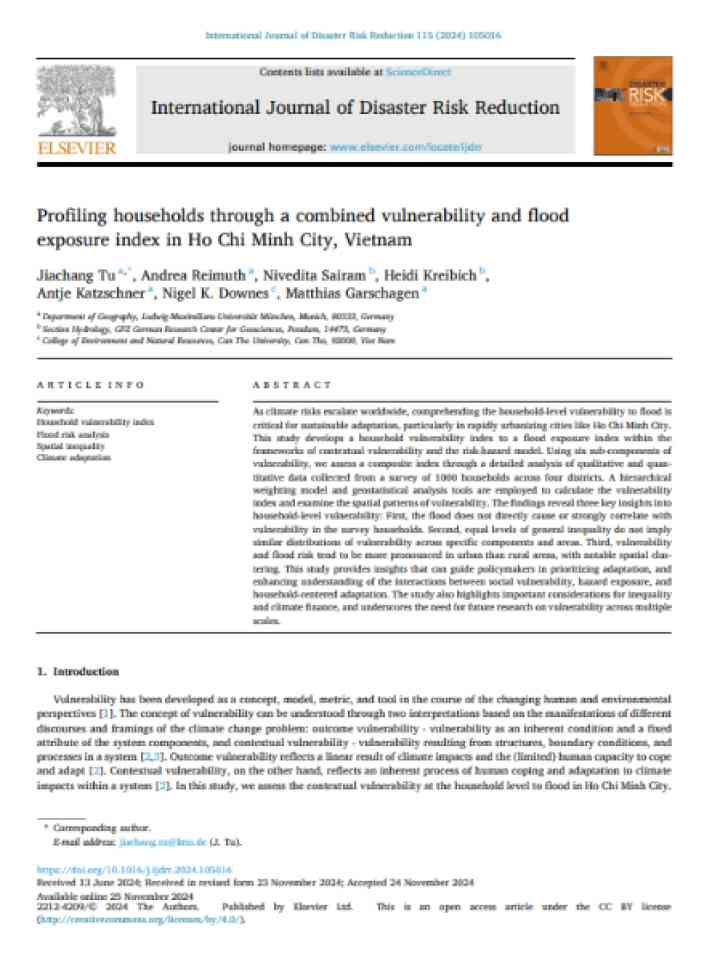Profiling households through a combined vulnerability and flood exposure index in Ho Chi Minh City, Vietnam
This study develops a household vulnerability index to a flood exposure index within the frameworks of contextual vulnerability and the risk-hazard model. Using six sub-components of vulnerability, the researchers assess a composite index through a detailed analysis of qualitative and quantitative data collected from a survey of 1000 households across four districts in Ho Chi Minh City, Vietnam.
The findings reveal three key insights into household-level vulnerability: First, the flood does not directly cause or strongly correlate with vulnerability in the survey households. Second, equal levels of general inequality do not imply similar distributions of vulnerability across specific components and areas. Third, vulnerability and flood risk tend to be more pronounced in urban than rural areas, with notable spatial clustering. The study provides insights that can guide policymakers in prioritizing adaptation, and enhancing understanding of the interactions between social vulnerability, hazard exposure, and household-centered adaptation.
Explore further
